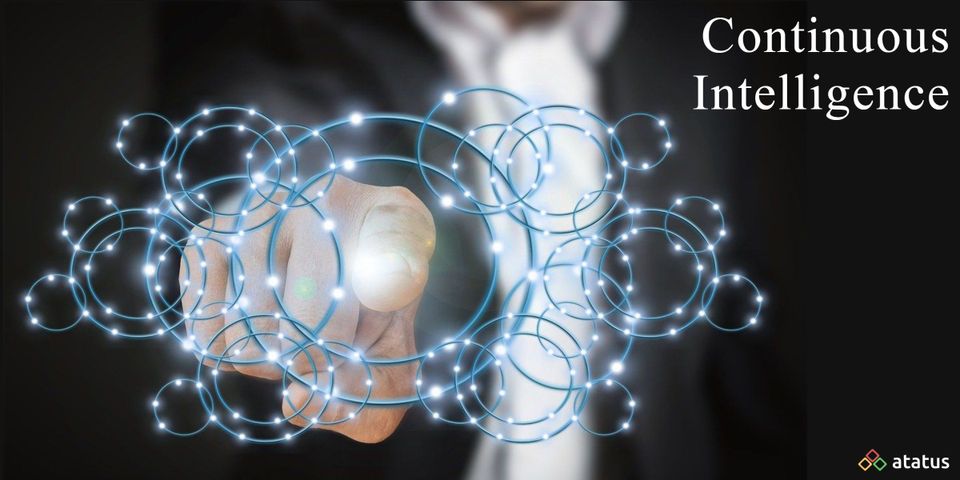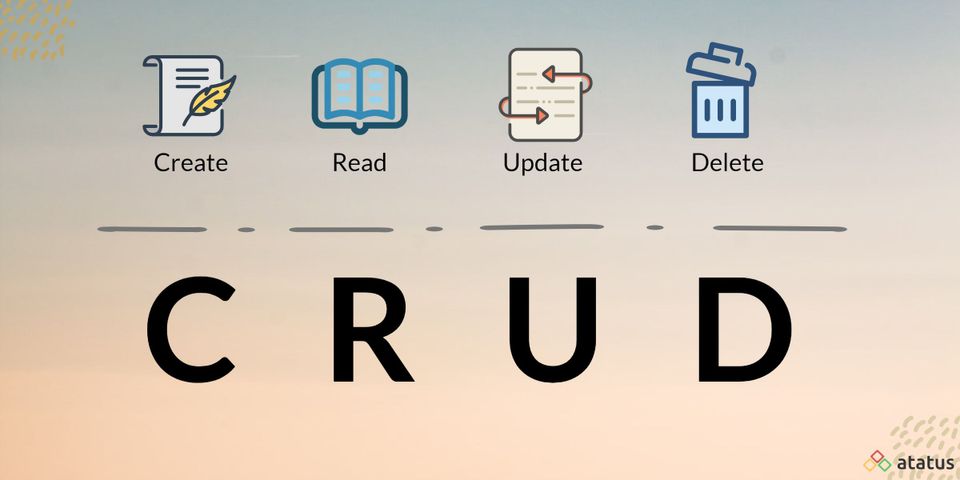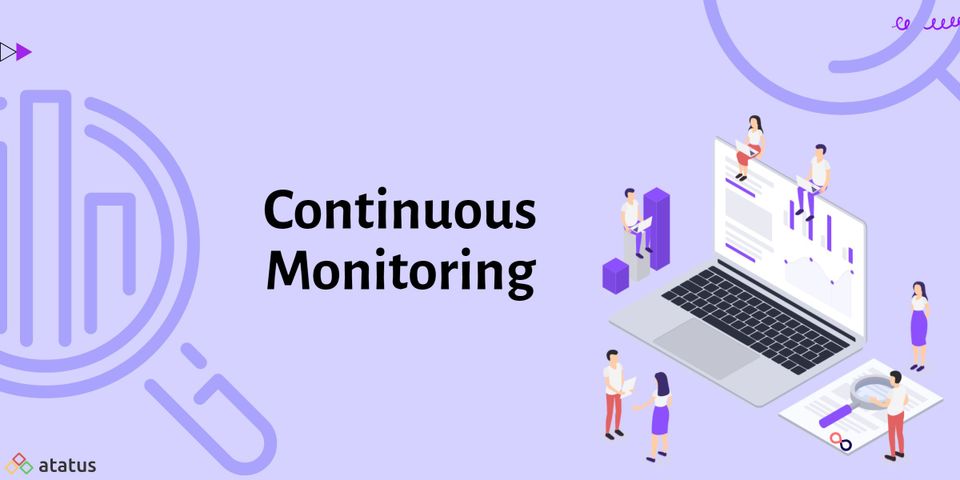We live in a world where companies can quickly become obsolete if they fail to address poor decisions and customer needs on a continual basis. Continuous intelligence is a cost-cutting strategy that allows businesses to evaluate data in real-time based on previous experiences and utilize it to reduce problem response times, speed up software delivery, and boost overall growth.
We will cover the following:
- What is Continuous Intelligence?
- How does Continuous Intelligence Work?
- Benefits of Continuous Intelligence
- Challenges in Continuous Intelligence
- Continuous Intelligence vs. Business Intelligence
- Why Continuous Intelligence is Important?
What is Continuous Intelligence?
Continuous intelligence is a design pattern that incorporates real-time analytics into a company operation, evaluating current and historical data to prescribe actions in reaction to events. To provide decision automation and support, it employs a number of technologies, including augmented analytics, event stream processing, business rule management, and machine learning.
To put it another way, it means removing any points of friction in the intelligence cycle, from data collection to analysis to uncover insights, design and development of experiments, and finally deployment and integration of Artificial Intelligence (AI) and Machine Learning (ML) into production systems. The introduction of enabling technologies, as well as the rise and implementation of approaches like MLOps and DevSecOps, have fueled the rapid adoption of this paradigm.
Continuous Intelligence systems are divided into two classifications:
- Proactive Push System
These are always listening and waiting for an opportunity to automatically push responses. - On-Demand System
The system must be activated by the user. It begins processing upon invocation and sends a response after a decision has been reached.
How does Continuous Intelligence Work?
DevOps is becoming increasingly popular as a primary methodology for software delivery. DevOps procedures and the upkeep of a CI/CD pipeline generate large volumes of logs, which legacy monitoring solutions in a distributed stack struggle to handle.
Furthermore, application monitoring has grown increasingly complex as a result of modern microservices and the inability of traditional technologies to integrate across new container-based platforms. Users have become more time-conscious, expecting quick fixes and updates. Stakeholders risk losing clients to competition if problem fixes take a long time.
To minimize unplanned or undesirable mishaps, your DevOps team needs real-time monitoring and predictive analytics to detect and recover from errors quickly and efficiently. They require monitoring technologies that can give them continuous intelligence in the form of real-time analytics and increased pipeline visibility.
The purpose of continuous intelligence in DevOps is to fix issues faster. More resilient architecture and services will result from improving the delivery process and incident management workflows.
Benefits of Continuous Intelligence
In a world that is continuously changing, a continuous intelligence-based approach allows businesses to stay on top of the market, react swiftly to changing conditions, and make educated decisions based on new insights as they emerge. The usual business intelligence cycle is in sharp contrast to this.
- Data Processing
The dedication required to deal with massive amounts of data is not easy until you believe you have mastered it. This suffering pays off handsomely. At each stage of data processing, you continue to reap the benefits. - Recognize Data Patterns
Machine Learning entails recognizing and identifying patterns. It includes the study of statistical data as well as the acquisition of knowledge. It aids in the classification of data and the application of identifiers, as well as the development of new algorithms and the creation of testing data. - Focus on Stakeholders
Continuous Intelligence brings long-awaited transformation to the stakeholders. Finding people who can combine technological and financial resources for the improvement of the organization's growth has always been a challenge for management. - Easy Mentoring
Continuous Intelligence is a never-ending potential that can be extremely beneficial to the company. When employees are engaged and participate in the learning process, it may be fun. - Predict the Customer Requirements
The findings show a strong link between intellect and observations. Customers, too, are obtaining a great deal of data on their own. We must find a way to engage with our customers in order to understand their expectations. - Adding Value to Data
The ability to translate basic probabilities into rich possibilities is developed through a continuous learning process. Improve the ability to provide superior results by improving the creation capability. - Data Creation and Simultaneous Analysis
Although AI and ML are still in the early stages of development, they have a lot to offer. Data storage and processing, as well as rapid analysis, provide you the benefit of adopting innovative solutions.
Challenges in Continuous Intelligence
On a technological level, the current systems required will nearly always add new components, increasing the overall platform architecture's technical complexity. This necessitates the development of new skills in the teams that create and maintain these systems, as well as new operating methods. To deploy machine learning models, at the very least, a model deployment platform is required, as well as event-based streaming infrastructure for specific use cases.
Apart from technology, perhaps the most basic hurdle to overcome is that enablement necessitates collaboration among all teams (data engineering, ML engineering, data scientists, subject matter experts, operations, and so on), rather than the typical segregated approach. Clearly, this type of cultural transformation will be a long road, made more difficult by the fact that maturity levels will undoubtedly vary across teams.
Continuous Intelligence vs. Business Intelligence
Continuous Intelligence (CI) is a frictionless condition that allows enterprises to gain continuous, high-frequency, intuitive insights from all data. CI solutions are quite new. Continuous Intelligence is a way of continuously interpreting data, detecting patterns, and learning what is useful in the data that is machine-driven and AI-based.
This enables business users to effectively mash up and combine diverse data with the goal of always discovering new insights and revealing them as a data storey with complete context. It replaces human biases in each phase of the data pipeline with a smart machine and AI that discovers everything in your data, no matter how complex it is.
Machine Learning and Artificial Intelligence are not used in business intelligence software. Instead, BI relies on people to coordinate each stage, from data access through the creation of insights in BI dashboards, utilizing a BI tool. BI wasn't built for complexity, and it wasn't built for the digital revolution, where information is supposed to be retrieved quickly.
Simply said, Business Intelligence is the high school student who needs a teacher's help with every step of the chemistry practical. Continuous intelligence is defined as the ability to understand concepts fast and only needs to be taught once. After that, he'll be able to complete the entire practice on his own.
Why Continuous Intelligence is Important?
According to research, more than half of new enterprises would implement Continuous Intelligence in their workplace by the end of 2023.
IT departments get a lot of notifications from the different alerts and monitors that have been set up. The majority of them are complicated, and it takes time to figure out what they're all about. Others take longer to resolve because IT staff need time to figure out the best strategy for a certain warning.
Since CI tools automatically decrease data patterns, issues may be traced down even before they arise, due to the introduction of the Continuous Intelligence platform. By deducing trends from the alert data, it can also provide them with the best method to solving a specific alarm.
A team member may go undiscovered by a cybersecurity attack (genuine human error). Even yet, if the CI tool is installed in the system, which is AI-driven, it can warn the team and, more specifically, the human response. This has the potential to save a company from chaos.
Conclusion
Continuous intelligence represents significant potential, but it also marks a significant departure from how most teams have traditionally operated. On the enablement path, there are enormous benefits to be achieved, but also big hurdles to overcome.
However, it is clearer than ever that organizations must accept and evolve at a rapid pace in order to stay ahead of the pack in terms of digital transformation.
Monitor Your Entire Application with Atatus
Atatus provides a set of performance measurement tools to monitor and improve the performance of your frontend, backends, logs and infrastructure applications in real-time. Our platform can capture millions of performance data points from your applications, allowing you to quickly resolve issues and ensure digital customer experiences.

Atatus can be beneficial to your business, which provides a comprehensive view of your application, including how it works, where performance bottlenecks exist, which users are most impacted, and which errors break your code for your frontend, backend, and infrastructure.





